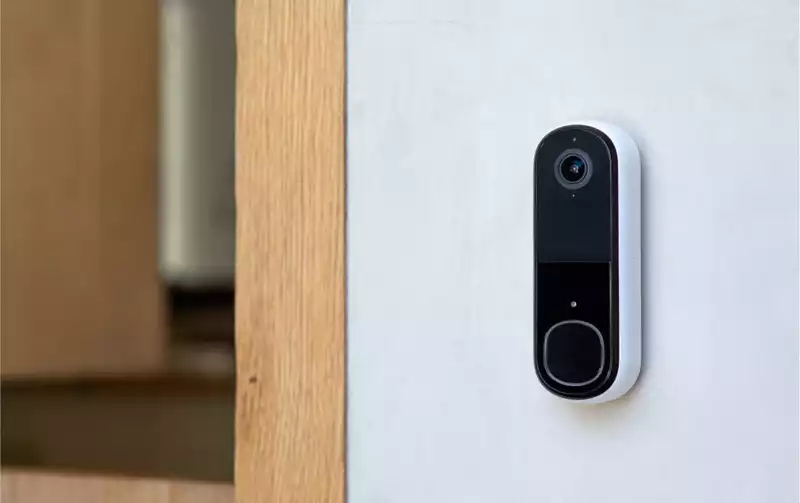Arlo has introduced not one, but two new models of its two-year-old video doorbells that offer improved integration with the company's new home security system.
In addition, the company is updating two outdoor cameras and an indoor security camera with new features and capabilities. The new features, prices, and release dates for each are as follows.
Like Arlo's current video doorbells, the second-generation models will have a 180-degree diagonal field of view to better see packages at the front door; while not as comprehensive as the Eufy Dual video doorbell, it is comparable to what you get with the Nest Doorbell and Ring Battery video doorbell. Like Arlo's previous video doorbells, this model can be either wired or battery-powered.
However, the new Arlo video doorbell has a built-in siren that can be activated from the Arlo app or automatically. The doorbell also works with Arlo's new Security Tag 3, allowing users to activate and deactivate the system simply by tapping the tag on the doorbell. [The 1080p model is $79.99 and the 2K model is $129.99. Both are available for pre-order and will ship by early October.
Like Arlo's current XL cameras, the second-generation Essential Outdoor XL camera will offer longer battery life than non-XL cameras. Of course, any of Arlo's cameras can be connected to a solar panel, and all current accessories should work with the new model.
The Essential Outdoor XL has a 130-degree field of view and a built-in spotlight and siren. It also has color night vision and is priced at $99.99 for the 1080p model and $149.99 for the 2K resolution model.
This is the same as the XL model, only with a quarter of the battery life; if you want the 1080p version, it's $49.99, and the 2K model is only $99.99. That's pretty significant, and puts it on par with budget security cameras from Blink and Ring. To be fair, Arlo has more expensive security camera subscription plans than other services, which may end up costing more in the long run. However, few competitors offer 2K camera resolution.
While the majority of Arlo's cameras are designed for outdoor use, there is one indoor camera, which will also be upgraded. Like the original, the second generation camera has an automatic privacy shield, which can be opened and closed from the Arlo app. Like the first generation, it also has a 130-degree field of view, night vision, two-way calling, and a built-in siren.
However, the price has dropped dramatically: the original indoor camera sold for $99 and was recently discounted to $59. The second-generation model costs $39.99 for the 1080p model and $79.99 for the 2K version.
Arlo is not doing anything dramatically new with its second-generation doorbells and security cameras. However, it is playing a stronger game in the low-cost security camera market, which until now has been dominated by Blink and Wyze. At the same time, Arlo is offering a choice between lower-priced cameras or slightly more expensive but with much higher resolution.
By lowering the price of its hardware, Arlo hopes to enter the home security camera market more aggressively, with cheaper devices offsetting the cost of the subscription plan. In contrast, Nest's plan is $80 per year; Ring's plan is also $99 per year, but can store up to 180 days of footage; Blink's plan (also $99 per year) can store up to 60 days of footage.
Still, of the competitors, only Arlo works with Alexa, Google Home, SmartThings, IFTTT, and HomeKit, making it the most platform-agnostic of the major security camera companies. This could also make the extra cost worth it.
.









Comments